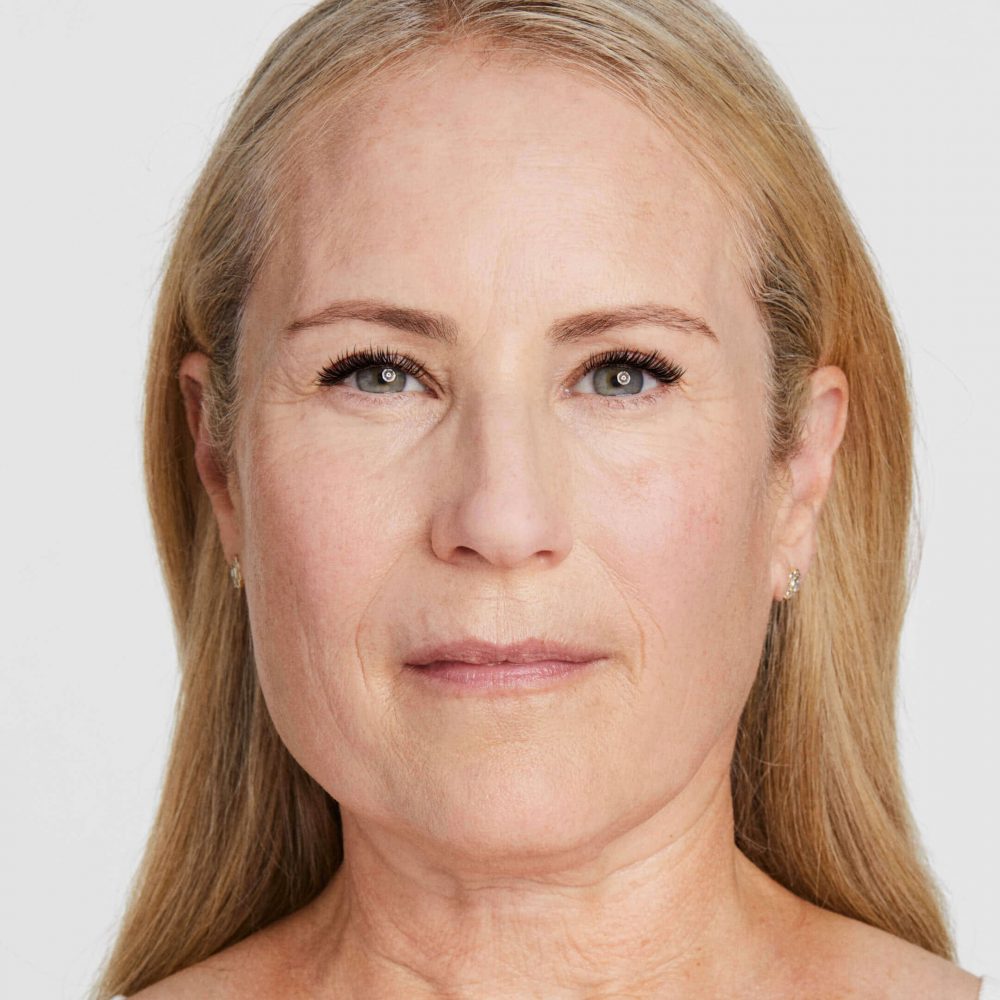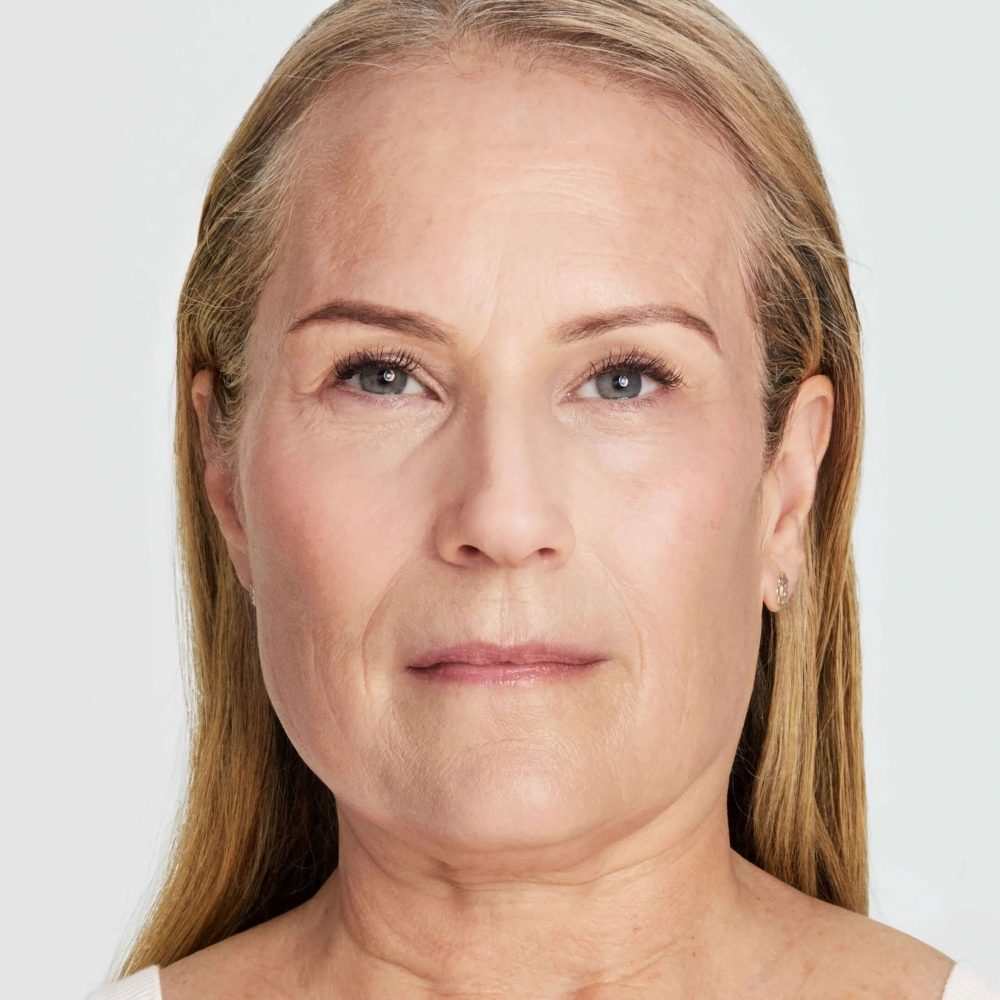
Ultherapy is a non-surgical procedure approved by FDA and Health Canada for skin tightening and lifting. It utilizes microfocused ultrasound energy to stimulate collagen and elastin production deep within the skin. This treatment is commonly used on the neck, chin, and brow area to improve the appearance of sagging skin without the need for surgical intervention.
Merz Aesthetics

Before |

After (180 Days) |

Before |

After (180 Days) |
1. How does Ultherapy work?
Here’s how it works:
Ultrasound Energy: Ultherapy delivers focused ultrasound energy to the deeper layers of the skin, specifically targeting the SMAS (superficial muscular aponeurotic system) layer, which is often addressed during traditional surgical facelifts.
Collagen Production: The ultrasound energy heats the tissue, stimulating the body’s natural collagen production. Collagen is a protein that helps maintain skin elasticity and firmness.
Tightening and Lifting: As new collagen forms over time, it helps to lift and tighten the skin, leading to a more youthful appearance. The results typically develop gradually over a few months and can last for up to a year or more.
Non-Invasive: One of the main advantages of Ultherapy is that it is non-invasive, meaning there are no incisions or downtime involved. Patients can usually return to their normal activities immediately after the treatment.
Customization: The procedure can be customized to target specific areas, such as the brow, neck, or décolletage, depending on individual needs.
2. Does Ultherapy hurt?
Ultherapy can cause some discomfort during the procedure, as it involves delivering focused ultrasound energy to the skin’s deeper layers. Many patients describe the sensation as a series of small, intense bursts of heat or tingling, especially in areas where the skin is thinner, such as under the eyes.
However, the level of discomfort varies from person to person. if you are concerned about discomfort, we will discuss your options for using over-the-counter pain medication and/or a numbing medication before treatment. We also may provide prescription medications when necessary. After the procedure, most people report only mild tenderness or redness, which typically resolves quickly. Overall, while there may be some discomfort, many find it manageable and worth the results.
3. Where can Ultherapy be used?
Ultherapy can be used on several areas of the body to lift and tighten skin. The most common treatment areas include:
Face: Targeting the brow, cheeks, jawline, and neck to create a more youthful contour.
Neck: Reducing sagging skin and improving the overall appearance of the neck area.
Décolletage: Addressing lines and wrinkles on the chest area.
Brow: Lifting the brow area to reduce hooding and create a more awake appearance.
Arms: Improving skin laxity on the upper arms.
Each treatment area can be customized based on individual needs and concerns.
4. What are side effects of Ultherapy?
Ultherapy is generally considered safe, but like any medical procedure, it can have side effects. Common side effects include:
Redness: Some patients may experience temporary redness in the treated area, which usually fades quickly.
Swelling: Mild swelling can occur, but it typically resolves within a few hours to a few days.
Tenderness or Discomfort: Some individuals may feel tenderness or mild discomfort in the treated area for a few days after the procedure.
Bruising: Rarely, some patients may develop bruising, particularly in sensitive areas.
Numbness: A temporary sensation of numbness may occur in some cases.
Skin Tightness: A feeling of tightness is common as the collagen builds up over time.
Changes in Sensation: Some people might notice temporary changes in skin sensitivity.
Most side effects are mild and resolve on their own within a short period. It’s important to discuss any concerns with your provider before the treatment to ensure you have a clear understanding of what to expect.
